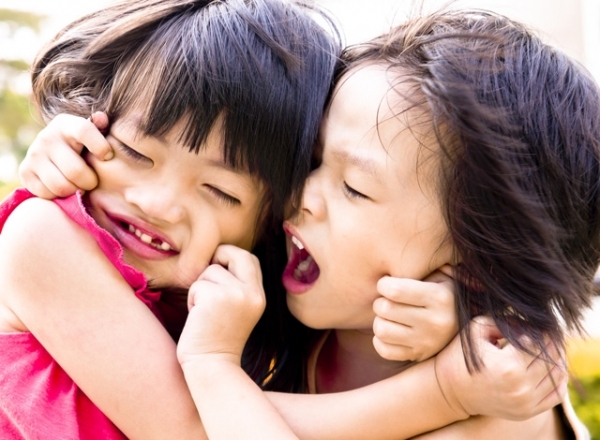Top 5 Behaviors That Cause Parents to Lose Their Cool: #1 Aggression
(and What to Do About Them)by Rebecca Eanes
Continued...
Use a Calm Down Area instead of a Time-Out. Designate an area of the house and set it up with a box containing a calm-down jar (glitter glue and water in a sealed jar), books, a small rice sensory bin, and balloons to pop. What? Is this a reward? Letting him play after he's just hit someone?! Well, when you need to go calm down so you don't yell at your child, is taking that moment alone a reward for your anger? No, it's emotional management, and it's important to learn. During this time in, you can be empathizing with his feelings and helping him verbalize what he's feeling and what made him angry. Some children will be soothed by this, and some will be further upset by it. You will know what works best.
Once the child is no longer angry, restate kindly and firmly the "no hitting" rule and discuss alternatives and what will happen if he hits again (leaving the play date, for example). Remember, this child is under 5. It's going to take time for him to master emotional control. The last thing we want to do is to pin the label of "naughty" or "aggressive" on him. Remember, children see themselves through the eyes of their parents, and they rarely live up to low expectations.
For children around 5-8, their executive brain functions are getting stronger and it's time to start problem-solving. This teaches them accountability, emotional intelligence, and positive conflict resolution skills.
##adbig##
It may look like this:
Emma is 7, and she just pushed her younger sister down. After checking on little sister, you take Emma to time-in. "Our rule is no pushing. Tell me what happened." Emma explains that little sister was annoying her. "Emma, what are the 3 things we went over that you can do when you're feeling upset? You can take deep breaths. You can walk away. You can ask me for help, but you may not push your sister. Tell me the 3 things you can do again."
Listen while she repeats them back to you. "Okay, good. So the next time you get frustrated with your sister, what are you going to do?" She'll probably say one of the 3 calm down techniques. "Good. Now I think your sister is feeling upset that you pushed her. How are you going to fix this?" If she doesn't offer any ideas, give her some. "You can write her a note, or make her a drawing, or apologize and give her a hug. Which do you think will make her feel better?" Teach her to repair rifts in relationships. The quick fix is to punish children with a spanking or a time out, but children need to learn how to fix their mistakes, not just pay for them.
Related Article: 5 Ways to Bolster Your Child's Emotional Intelligence
If children over the age of about 8 are showing aggressive behaviors, find out what's going on inside that child. What is that aggression covering up? The problem-solving process may involve a consequence, for example, if an angered child broke something, he needs to work to pay for it, but the focus is still on teaching, not retribution. Check out this article, Loving Courageously Through Aggression, which speaks on dealing with aggression through love.
If you feel your child is showing aggressive behaviors that are extreme or sudden and out of character, seek professional advice.
Aggressive behavior is very common in young children. While this is a common phase for children to go through, it is the parent's responsibility to set appropriate limits and teach alternatives. For more on handling aggression, visit my website at www.positive-parents.org, or get my book Positive Parenting in Action, which has an entire chapter devoted to dealing with aggressive behavior.
Here are the other posts in the "Top 5 Behaviors That Cause Parents to Lose Their Cool" Series:
Don't forget to follow us on Twitter and like us on Facebook!


You might also like.













